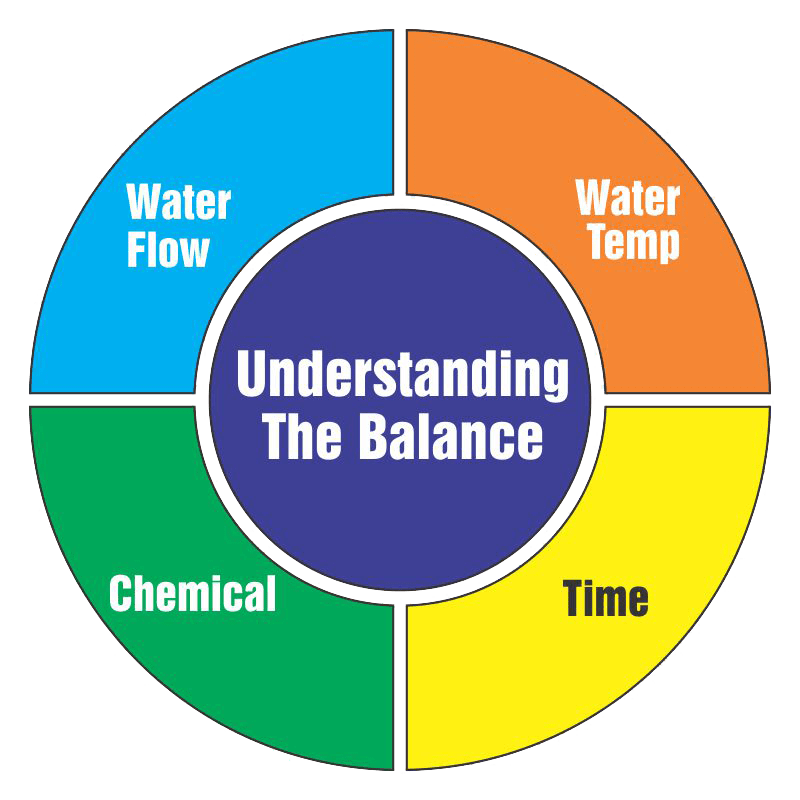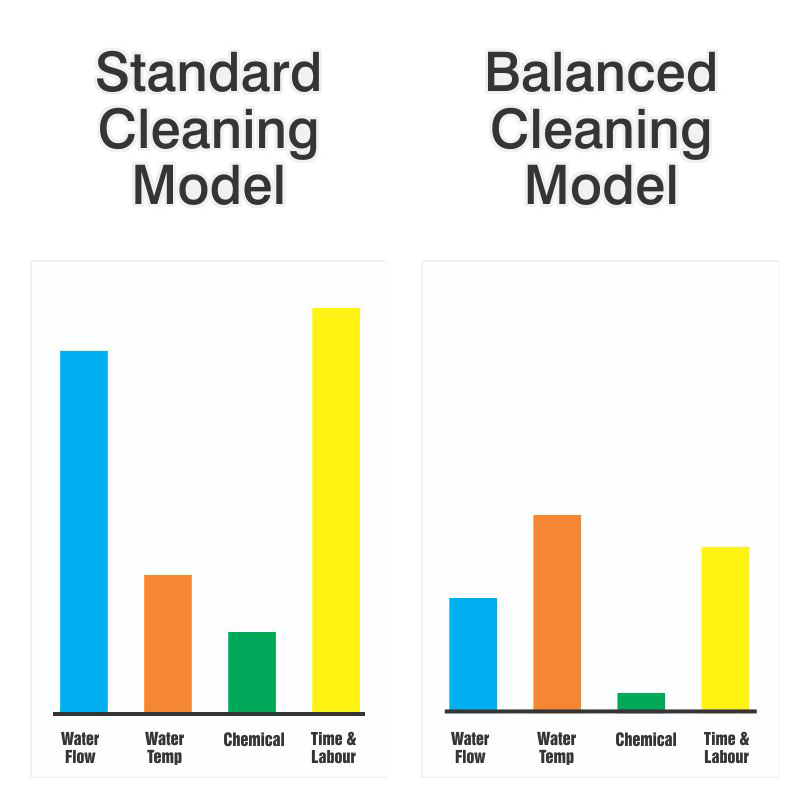Do we really understand the recipe of the cleaning process?
To an untrained eye the cleaning process look’s straightforward enough to understand; (a) we have a dirty factory or equipment that needs to be cleaned within (b) a certain time frame ready for production. Cleaning is really a complicated process with many things to juggle in order to reach a high standard within the timeframe & KPI’s.
With 25 years’ experience within the cleaning field below I will outline the recipe to clean a production plant.

The key ingredients to a cleaning recipe are:
- Flow of water
- Temperature of water
- Chemical quality & amount
- Time frame and labor available
The recipe for your cleaning cycle will depend on what you are cleaning: meat protein, vegetables, oils, flour. The other factor is the equipment you are using. To compare the costs & outcomes of your cleaning all things need to be considered. There are theories I hear which I question how was this proven? When was it proven? What were the circumstances? Has it been reviewed? With technology things change just as with other parts of life. What applied years ago may not be the same today. When I am testing & proving it is on the floor with a hose in my hand & filming. As a factual based person, I need proof of what I am doing & the result I get. As cleaning is my passion this is the important step to change cleaning & get better at it. Without this process otherwise we can never change.
Everything else is reviewed in a production plant & life in general so why should it not apply to cleaning?
FLOW OF WATER
The flow of water for cleaning is critical & do not confuse this with pressure. People will usually focus on pressure, naturally pressure can damage equipment. Flow of water is one of the keys to your cleaning time & outcome. Two of my observations I have seen in the industry:
30 litres per minute nozzles on conventional multistage pumps
To understand these nozzles I have timed different tasks- grinders, silver bins, blenders & heavily soiled epoxy floors with meat/fat. To properly assess these tasks I used the’30lpm’ nozzle & the ‘50lpm’ nozzle. This gimmick of 30 litres per minute is not true in most circumstances of more than light soiling. As I timed each task the time results to get the outcome meant that I am using 80-120 litres per minute. This also adds to the cost of labour.
80 litres per minute hoses off mains pressure
These hoses are costly on water with too much flow that the average worker cannot keep up with. Water costs will be higher than necessary.
TEMPERATURE OF WATER
By standards cleaning temperature is recommended at 60/65 degrees. Some plants run at 82 degree. After many years’ experience I would agree with running at 82 degree temperature if it is available. When you have the right flow for impact pressure 82 degrees gives an unbelievable result in quality & time. When time is saved it will automatically lower your water costs. There will be other knock on effects: additional drying time, potential longer production.
CHEMICAL
Chemical is always a big issue on any plant as it’s expensive & there affects on the waste treatment side, another cost. When I say quality & quantity this is for a reason as I have use many different types & witnessed the results. For me this is probably the most exciting part of the night to watch soap being applied. The better your coverage the higher your results will be. My staff know that we hit the corner where the ceiling meets the wall & down is where we start. Everything is foamed & this is critical. It will contribute to a clean smelling factory no doubt about it.
The other myth I hear is that it cannot be runny it must be thick & stick to the wall for X amount of time. This is not true (Watch the video below comparing two foaming styles). Ask yourself who is telling you this? Have they cleaned & proven their theory? Or has it just been done this way all the time. The quality of chemical is also important, cheap chemicals have more caustic to reduce the cost of it often requiring more than you really need. Book a free trial to see this for yourself.
TIME FRAME
Time frame for production are one of the most important issues, you want to get the most out of your facility which is already costing. I get around & see many sites & I have not heard many or any say that they can do more. Cleaning cycles will usually always cost more with staff if you want a bit extra done or production runs later. Labour is expensive so it’s crucial to get this right. People that know me well are familiar with how I run my cycles: lean & mean I don’t believe in waste anywhere. Running my own business I am very familiar with costs & not wasting resources. I have also worked with businesses that have our equipment & run somewhere in the middle of standard routine & our routine saving approximately 30% labour
With the correct equipment it can be achieved
If you would like to book a trial in your facility, please call
Australia & Asia, Joanne Field; Product Development Manager, on 0409 123 850 or email jo@europumps.com.au or
USA Mike Sandoval; West Coast Sales Manager on +18315243751 for USA
and we can make an assessment of your savings.

